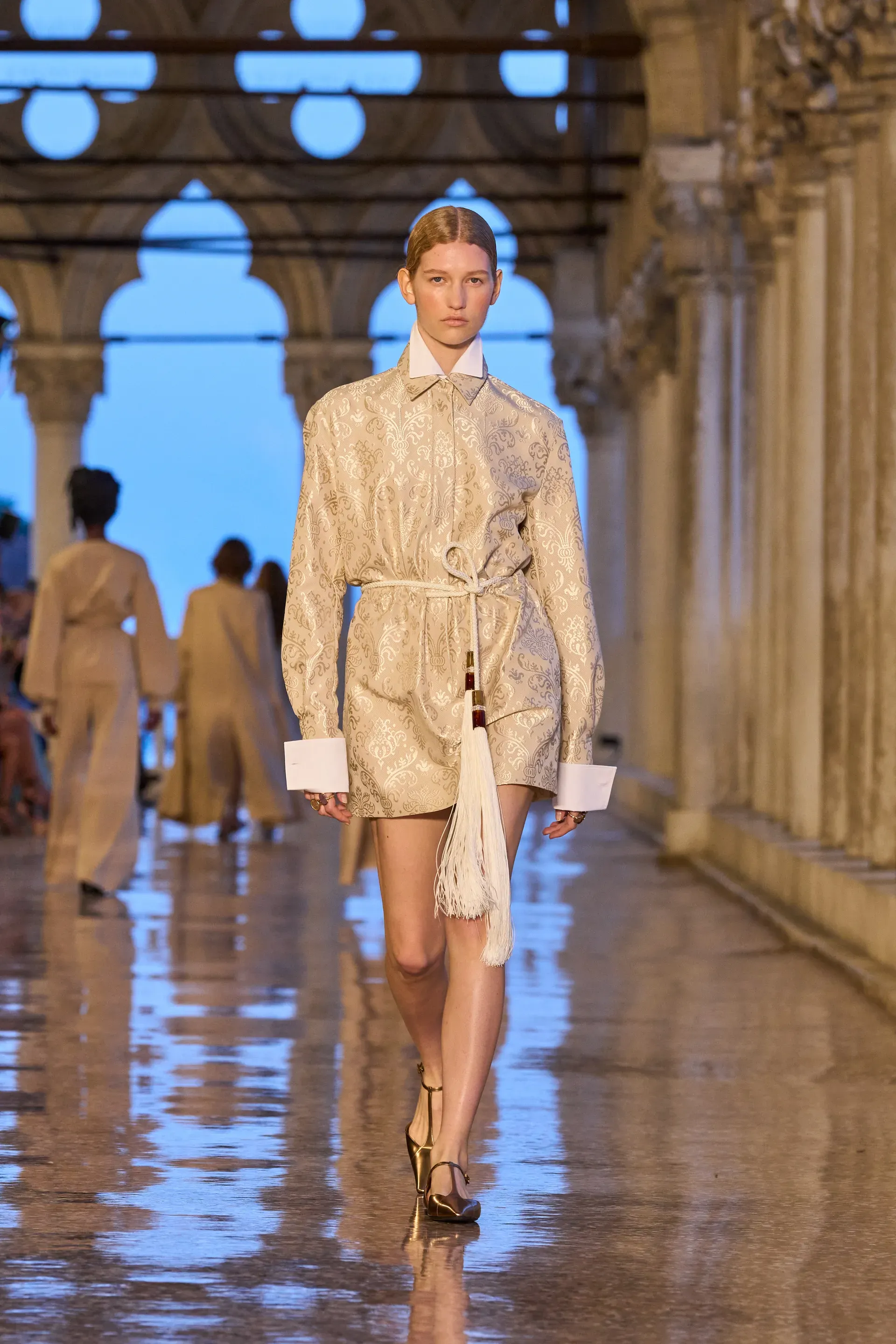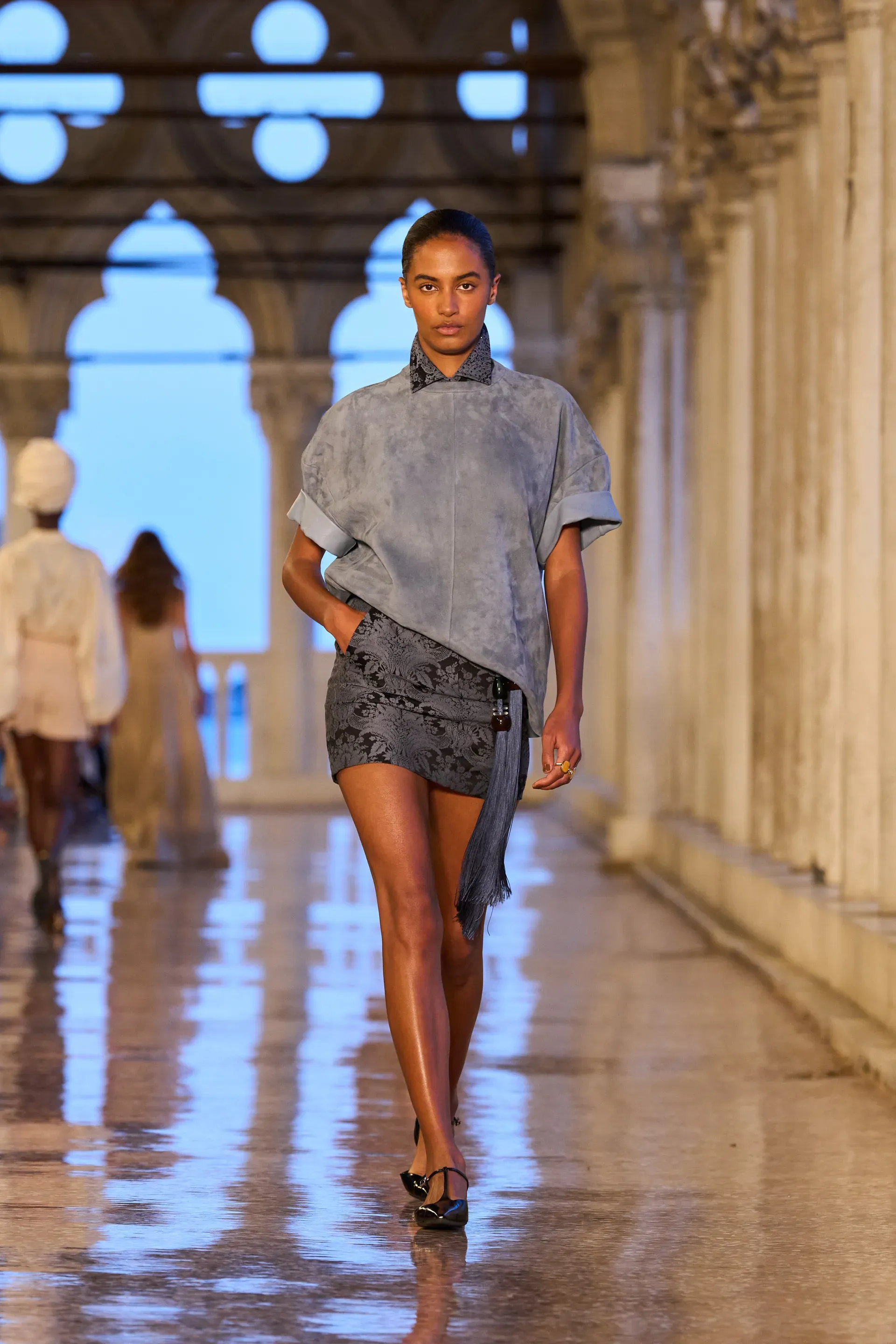Falling under the spell of Venice is the easiest thing—the city’s aura is bewitching. “It’s a magical place, said Ian Griffiths, “at the crossroad between the East and the West. It’s where luxury was born, Marco Polo was a trading genius who seven centuries ago introduced Western culture to the opulence of the Far East through the Silk Road.”
Max Mara traveled to La Serenissima as an homage to the curiosity and spirit of adventure that brings about discovery and evolution. The show was held at Palazzo Ducale, a gothic masterpiece so sumptuous that John Ruskin, in his book The Stones of Venice, described it as “the central building of the world.” No fashion show has ever before been granted access to its spectacular salons. Griffiths sounded rightly proud that the company’s reputation had been able to open such magnificent doors.
Models paraded at dusk in the external loggia, against the backdrop of St. Marks square. It couldn’t have been more breathtaking. From the front row, Kate Hudson, Brie Larson, and Alexa Chung looked rightly impressed. Although the collection hinted at the Venitian flair for opulence and extravagance, the historical references were threaded lightly. “We’re not doing a costume drama for the BBC,” joked Griffiths at a preview. His intention, he said, was to design “a wardrobe that expresses a slightly debonair, adventurous, almost swashbuckling feel, to be worn by a confident modern woman with a certain swagger.”
Silk-tasseled belts cinched voluptuous, sweeping cashmere coats at the waist, caftans and billowing dusters had a breezy presence, and capes were enveloping like tabarri, the traditional cloaks worn by Venitian gentlemen in the 18th century. Sleeves were a focal point— balloon-shaped, cut like asymmetrical handkerchiefs, or else slender with contrasting cuffs. The silhouette was kept long and lean, or short and leggy; as always with Max Mara, decoration was used sparsely, yet the collection had a more elaborate feel than usual, due to the gentle luxury of jacquards inspired by Byzantine mosaics, and the translucency of organzas reprising the golden curlicues of Eastern ornamentations. The temperate decorative tone was offset by a palette of neutrals, and obviously by lots of camel, that, after seasons of lesser prominence, “was back with a vengeance,” said Griffiths.
The collection’s pièces de résistence came at the end; the four final looks were replicas of the designer’s degree collection at Manchester University 40 years ago, where he interpreted the theme of Venice working with a textile designer who graduated with him. “The samples from that collection were still intact in my attic in London,” he said. “The patterns at the time were made with Ossie Clark. They still looked perfect, so we decided to reproduce them for this occasion, and they sort of set the tone for the entire collection.” A billowy cape, a round-shaped cocoon, a layered asymmetrical halter dress, and a dramatic opera coat fit for a Fortuny muse were surmounted by towering matching turbans, courtesy of Stephen Jones. They definitely had an edge. “I’m proud that after 40 years they still look relevant. What I design now is a lot more conventional.”
















Comments
Post a Comment